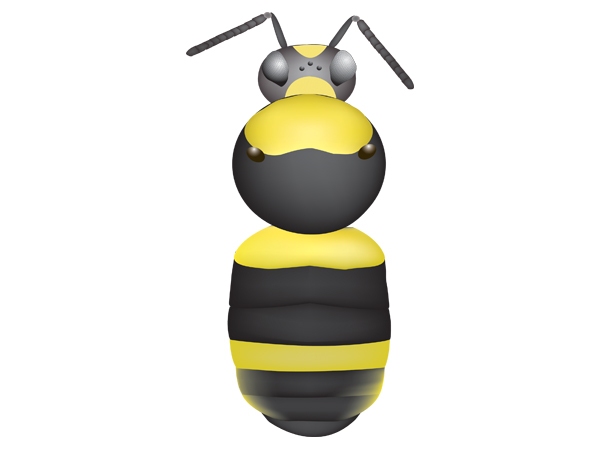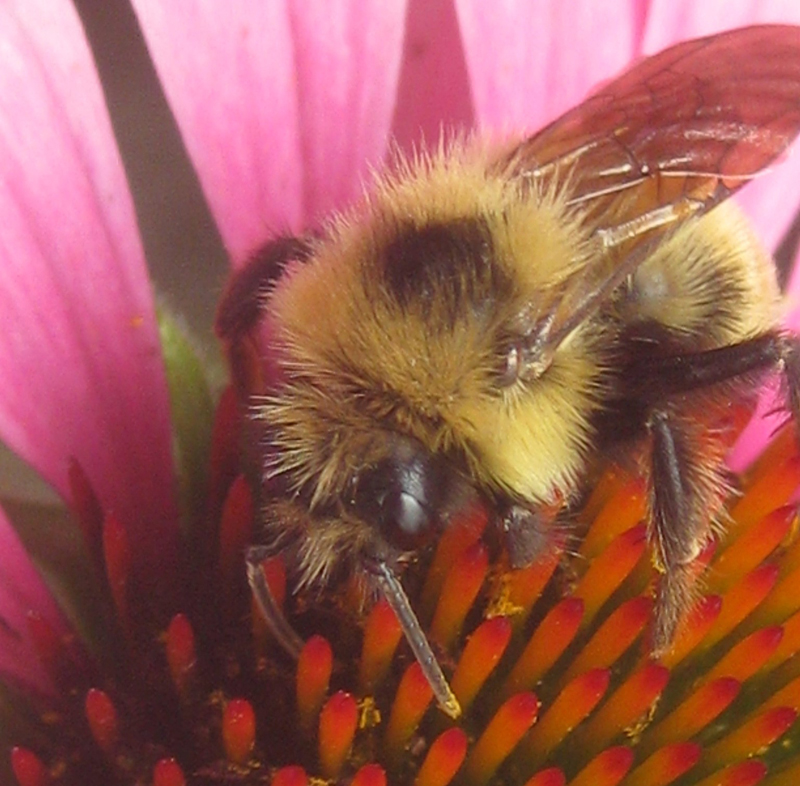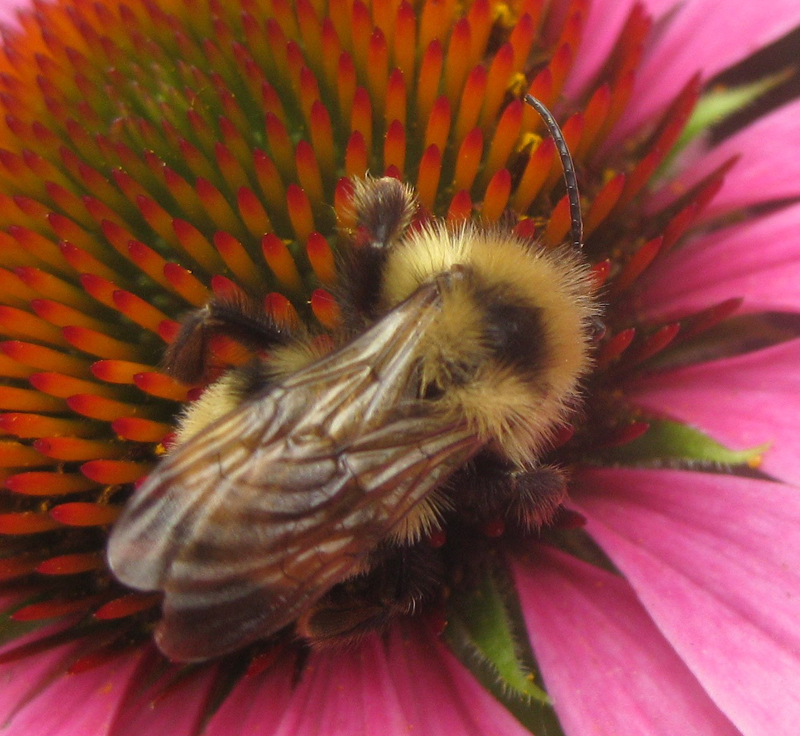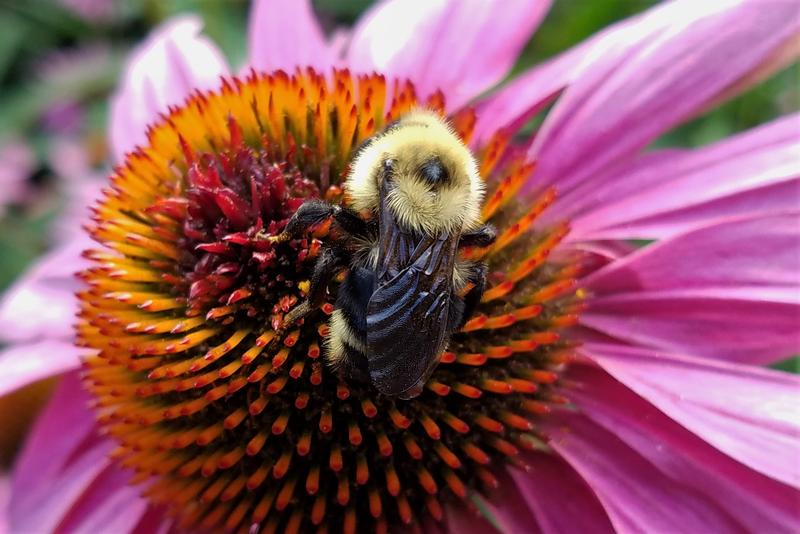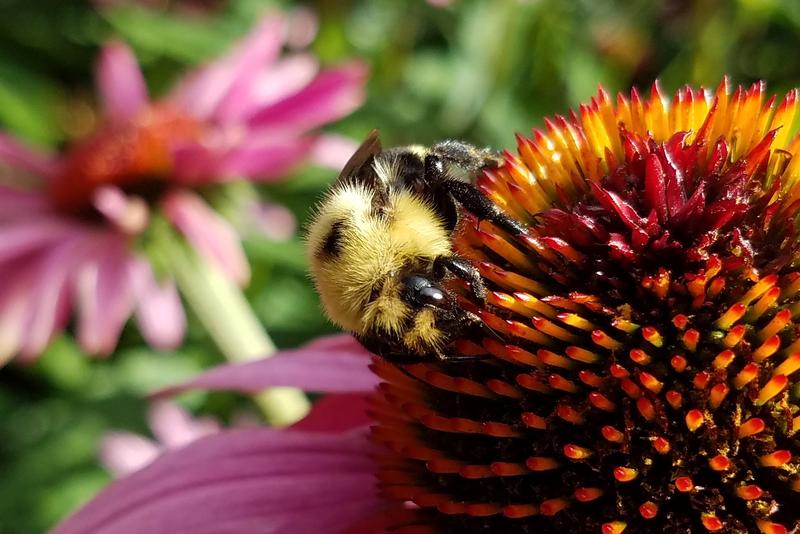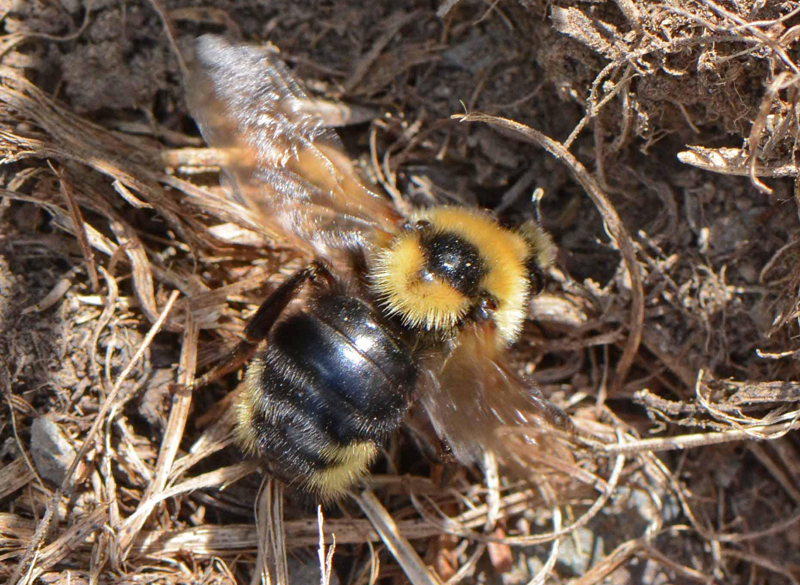
Status-Global/State:
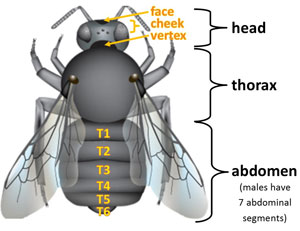
Identification:
- Female – Face black with a dense yellow patch above the base of the antenna and vertex yellow. Thorax yellow with large black patch occasionally extending to the wingpads. Abdominal segments T1-2 black, T3-5 mostly yellow on the sides and black in the middle, and T6 black. Some morphs have a yellow T4 segment and have intermixed fringes on T5.
- Male – Face intermixed and vertex yellow. Thorax yellow with large black band often extending to the abdomen. Abdominal segment T1-3, T4 and/or T5 yellow with black in the middle and T6-T7 black.
- Other distinguishing features – Hair medium and even, wings light brown.
Similar Wisconsin Species:
Similar bumble bee species in Wisconsin are the Ashton cuckoo (B. bohemicus) and Fernald cuckoo (B. flavidus) (Williams et al. 2014).
Description of Habitat/Range:
In North America, this species occurs in a variety of habitats.
Nectar Plants
Short-tongued bumble bee. Food plants include: Asters, Eupatorium (Joe-pye weed), Heliomeris, Melilotus (sweet clovers), Rubus (blackberry), Senecio, Solidago (goldenrods), Trifolium (clovers), and Vaccinium (blueberry) (Williams et al. 2014, Colla et al. 2011).
Data from verified B3 observations [updated 2/28/2024].
Flight Season:
Wisconsin's observation records took place between May and August. Rangewide queens emerge in May and enter diapause in August (Colla et al . 2011).
Literature Cited:
Colla, S., Richardson, L. and Williams, P. (2011) Bumble Bees of the Eastern United States. A product of the USDA Forest Service and the Pollinator Partnership with funding from the National Fish and Wildlife Foundation.
Hatfield, R., Jepsen, S., Thorp, R., Richardson, L. & Colla, S. 2014. Bombus insularis. The IUCN Red List of Threatened Species 2014: e.T44937688A68984117.
Williams, P.H., Thorp, R.W., Richardson, L.L. and Colla, S.R. (2014) The Bumble bees of North America: An Identification guide. Princeton University Press, Princeton.

